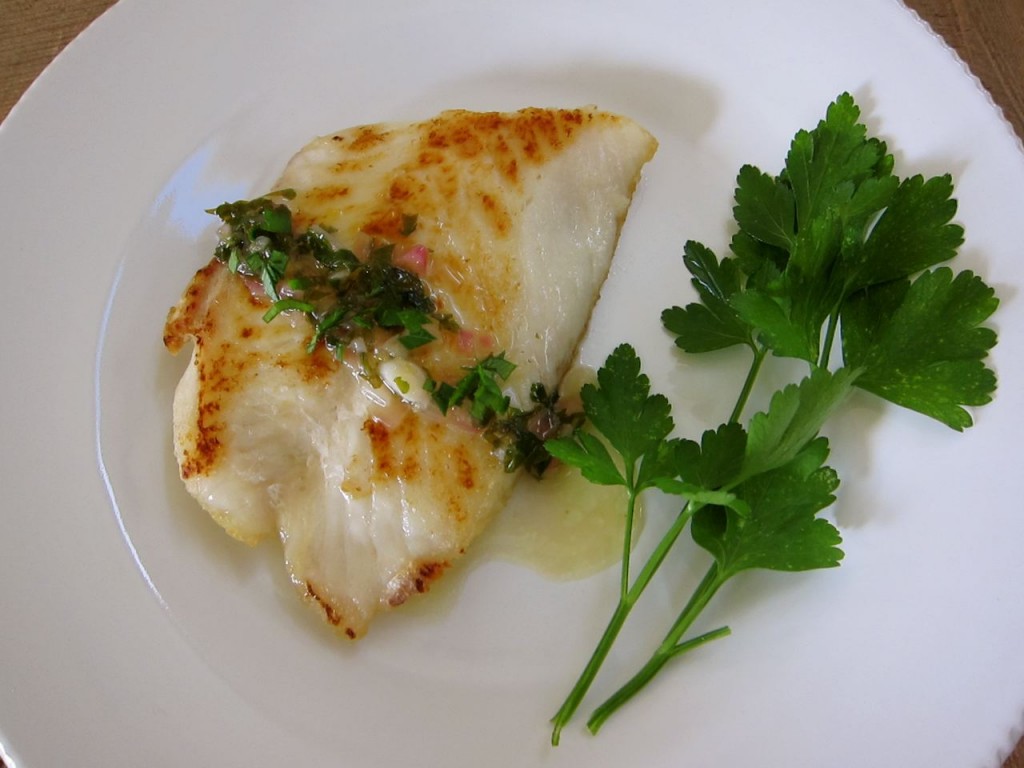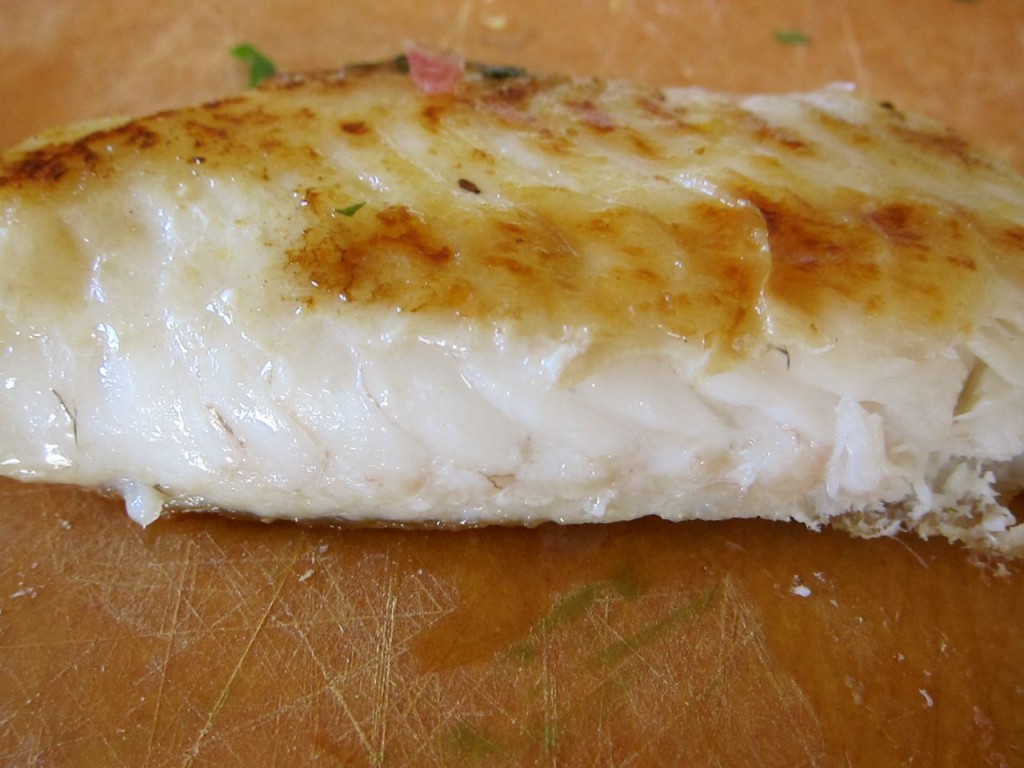How to Cook Fish Like a Pro
At least once a week someone asks me about cooking fish saying something like, “I have a great recipe for salmon that I have used for years, but I seldom buy other fish because I don’t know what to do with cod or halibut or bass or Orange Roughy, whatever that is.“
If that could be you, try this experiment. Imagine eating fabulous Fish & Chips. First, take away the fries, then the tartar or hot sauce and finally the crunchy, slightly greasy batter crust. Can you imagine the taste and texture of the fish? Probably not, because the delicate flavor and signature flaky texture of the fish were overwhelmed by the deep fried crust and condiments.
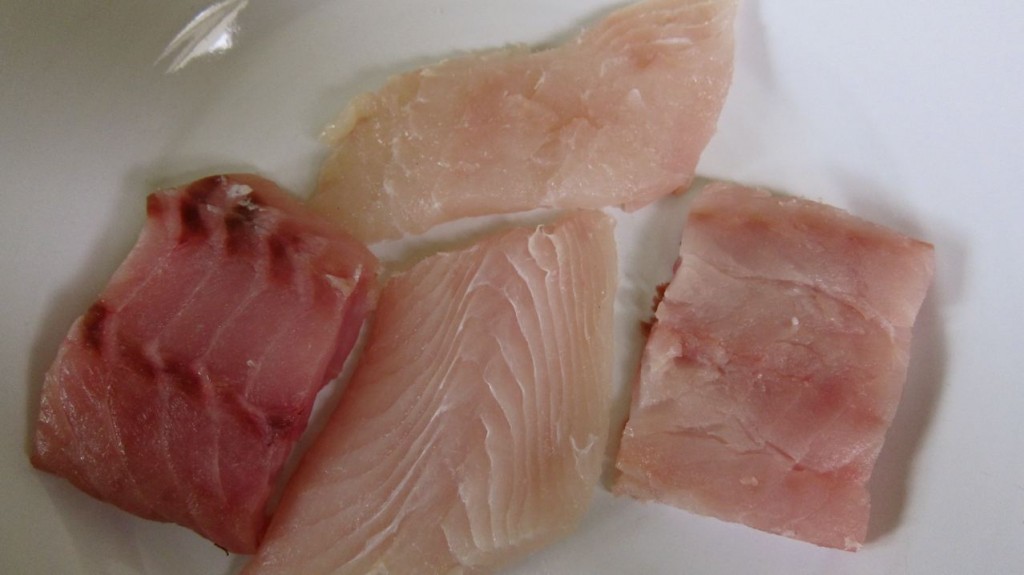
Ready to cook, relatively thin pieces of different white fish varieties. Clockwise from left red snapper, sole, halibut and Pacific halibut.
With few exceptions, the less body fat that seafood contains the more delicate its texture or natural flavors are. So I follow this general rule for cooking all seafood: cook at the highest temperature feasible for as little time as possible.
Following are four different cooking methods for less fatty varieties of fish. First some Hints:
- If you want a crisp surface texture on fried, sautéed or grilled fish, pat it dry with paper towel before cooking it.
- Bring fish to 60º-68º before cooking it. Cold fish takes longer to cook.
- Fish needs to be served immediately after it is cooked. Most sauces take longer to cook than fish, so make sauces first.
- If you want a crispy surface on fried, sautéed or oven baked, leave it alone for at least a minute after you put it in the pan. When it moves easily with a slight nudge of a fork it won’t stick and is ready to be turned or taken out.
- Checking for doneness in fish takes a little practice. A small cut into the center will show what the inside looks like but might damage delicate flesh. Another method used by most chefs is to press lightly on the center. If it feels firm it is cooked or close to it. A general timing rule is 5 minutes per inch of thickness. It is not exact though so don’t shy away from experimenting. Remember to err on the side of rareness; you can always cook it a little more.
- Fish continues to cook after it is removed from a hot pan. Take that into consideration when you determine doneness.
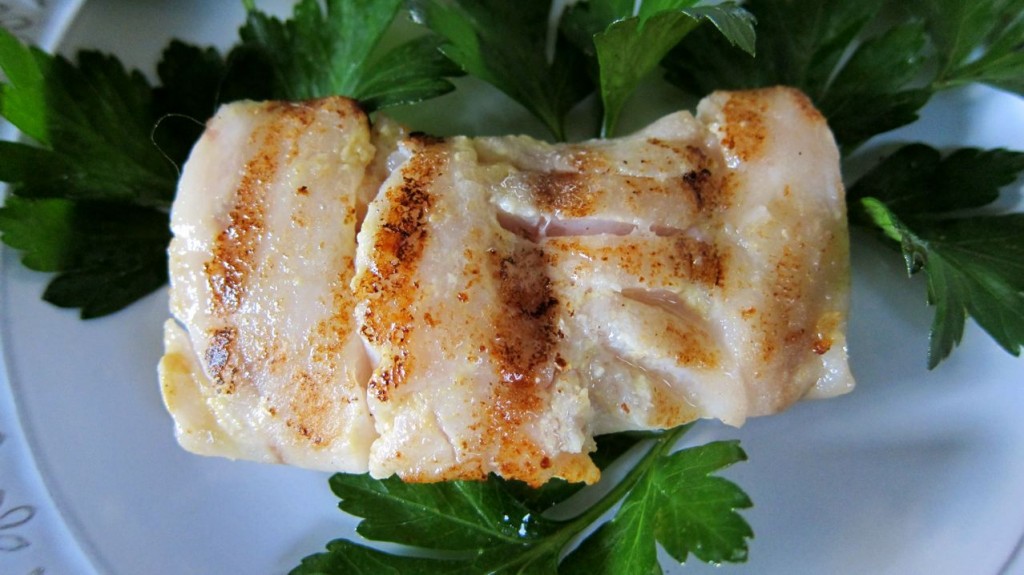
The visible pink flesh indicates that this piece of halibut is almost but not quite done. Back to the oven for a minute or two.
Methods
Poaching Serving Size Portions
Poaching is an easy cooking method for fish that will be served cold with a mayonnaise, aioli, tarter sauce or salsa. Put enough water in a pan to reach about half way to the top of the fish. Add a hunk of fresh lemon. Bring water to a low simmer, add the fish and cook until it is just opaque and slightly firm to the touch. Using a slotted spatula, transfer the fish to a plate and cool to room temperature. Cover with plastic wrap and refrigerate until about 30 minutes before serving (no more than 24 hours). Serve poached fish at a temperature between 50º and 65º.
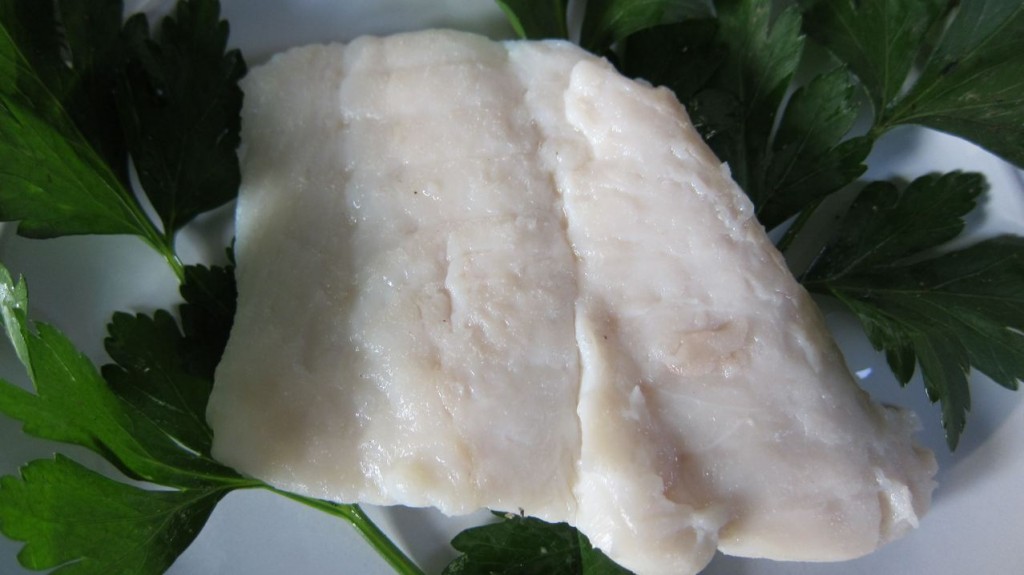
Poached fish for salad. It certainly needs a colorful sauce like a golden homemade mayonnaise or multicolored salsa.
Pan Frying and Sautéing
Pan frying and sautéing are similar methods that produce different flavor and texture. Because sautéing uses butter that burns easily, the cooking temperature is lower than it is for frying. Sauté recipes often call for dusting fish with flour to get the crisp outside texture that frying produces without flour.
Pan Frying
Heat a skillet until it is hot but not smoking. Add Canola, grapeseed or another clear vegetable oil that tolerates high heat (not olive oil). After 30 seconds adjust heat if necessary. When the fish can be moved easily with a fork (Hint #4), turn it over with a spatula and cook the other side. When it’s done (Hint #5), transfer it to a heated plate and serve immediately.
Sautéing
For crustier surface, dust fish before cooking with a very light coating of all purpose flour or finely ground breadcrumbs. In a non-stick skillet, melt unsalted butter and a little bit of clear vegetable oil (about ¼ oil to ¾ butter) until it is slightly frothy and begins to brown. Add fish and cook until golden brown. Turn and cook the other side until fish is done. Transfer to a heated plate and serve immediately.
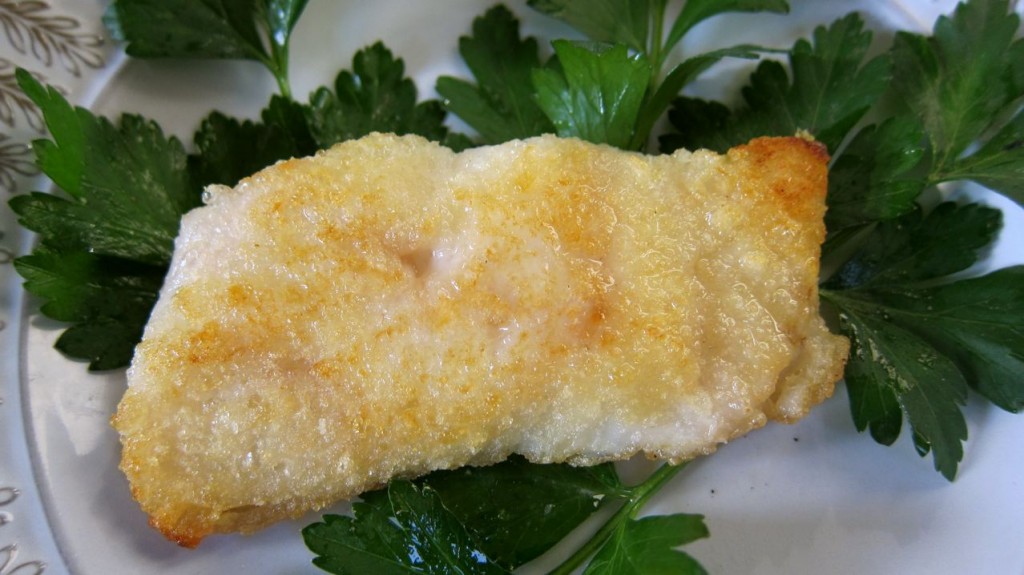
The golden crust on this sauteed piece of snapper is a result of a light dusting of finely ground breadcrumbs.
High Temperature Oven Baking and Outdoor Grilling
Preparations for high temperature cooking:
The Fish: I prepare fish for both processes by very lightly brushing the surface of the flesh with Dijon Glaze or plain olive oil to seal the surface pores and prevent drying.
The Cook: High temperature cooking can be dangerous and smoky. Before you begin, get out the potholders and turn on the kitchen fan.
Oven Baking
This process requires a heavy skillet. I prefer cast iron for two reasons; it creates more heat that lessens the cooking time, and the pan is seasoned and needs no added oil.
If your skillet has a rubber protector on the handle, remove it before putting it in the oven. If the handle is plastic, protect it with a foil wrap before putting it in the oven.
Put a skillet into oven and preheat oven to 500º. When it is at temperature, take the pan out of the oven and close the oven door to keep heat in. If the pan is not cast iron or non-stick, add1 or 2 tbs. Canola, grapeseed or other clear vegetable oil that tolerates high heat (not olive oil). Put the fish into the pan and return the pan to the oven. After 2-3 minutes for fish 1” or less thick or 5-7 minutes for thicker fish, check to see if the bottom edges are crusty and brown. If they are, turn the fish over and cook on other side. When it’s done (Hint #5), remove pan from oven, transfer fish to a heated plate and serve immediately.
Outdoor Grilling
Having problems with fish sticking to the grill? Try raising the cooking temperature, a lot. High temperature prevents fish from sticking to the grill. Try taking it up to at least 600º. I usually grill at 800º, and restaurants often grill above 1200º.
Begin by brushing the surfaces of the fish with a very thin coating of Dijon Glaze or oil; too much oil will cause a flame up (don’t oil the skin).
Cook fish for 1-2 minutes and check for doneness without moving it until it comes up easily. Then turn it and cook the other side.
Transfer cooked fish to a heated plate and serve immediately.
I don’t recommend this method for thin cuts (1/2” or less) of the delicate varieties of white fish such as True or Lingcod, sole, perch, Pacific halibut, Snapper etc. They cook so fast that they are likely to break apart. Thin cuts of denser varieties like Swordfish, Tuna, Wahoo (Ono) do well.
After a couple of practice sessions, fresh fish cooked at a high temperature and sauced with a simple blend of fat and citrus can become a quick, healthful and delicious go to dinner entree.
